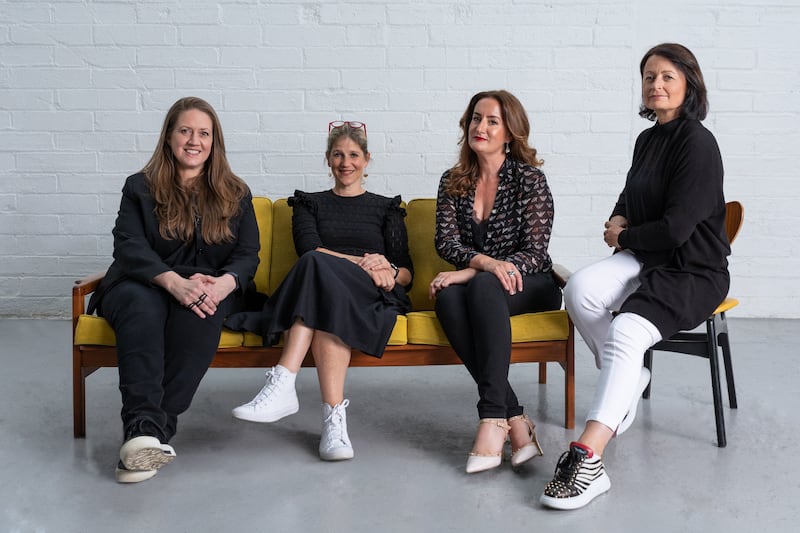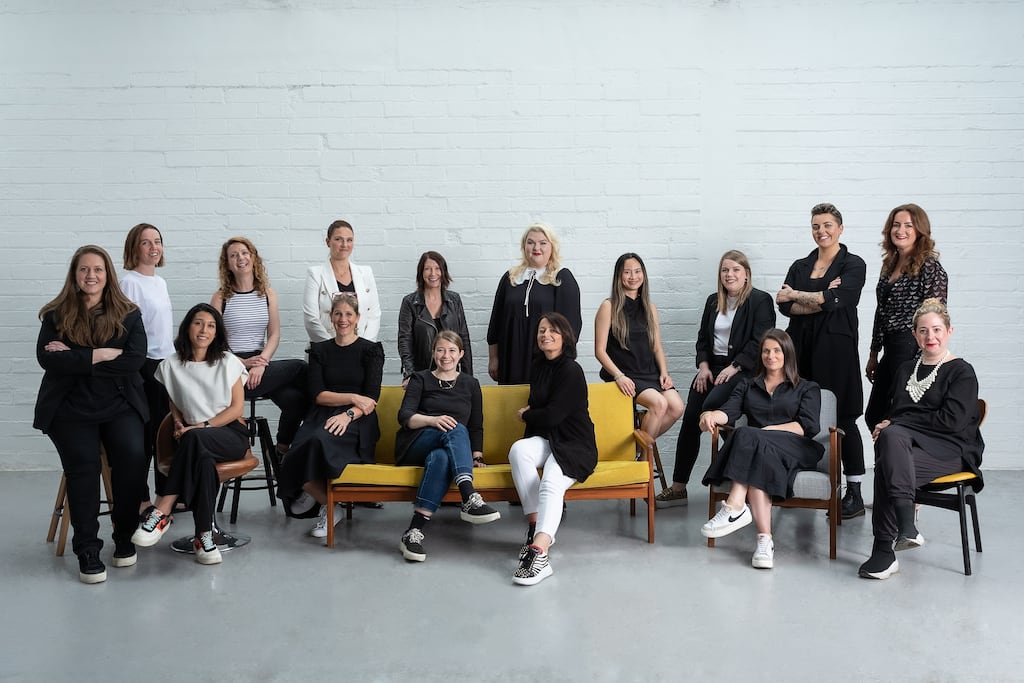Effective creative communications should be designed by those representing today’s consumers. So why is it then that women in senior creative roles are so badly represented within our global industry, asks Charley Stoney, CEO of the Institute of Advertising Practitioners in Ireland (IAPI)
The facts spell it out. In 2022 in the US just over 35 per cent of all creative directors are women, an increase of just over 6 per cent in the last decade, according to recruiters Zippia. Last June, equality, diversity and inclusion consultancy Creative Equals put the proportion of female creative directors in the UK advertising industry at 17 per cent.
In 2018, you could count the number of senior female creatives in Ireland on one hand and anecdotal research carried out across IAPI’s membership informed us that the industry was simply not perceived as a place suited to a creative leader juggling family commitments, or indeed one seeking a stable work/life balance. The late night and weekend work, and the lack of flexibility on offer were unanimously cited. Many women capable of taking on the most senior roles either opted to go freelance, moved to a part-time role, (rarely on offer), or changed industry.
IAPI has been promoting and running initiatives to support gender balance across all roles in creative communications, specifically in leadership. Thanks to the support of Diageo, IAPI runs an annual leadership coaching programme, Female Futures Fund, (link here Female Futures Fund) that enables 25 high potential women to learn the skills and overcome confidence issues that might otherwise prevent them from becoming industry chiefs.
READ MORE
IAPI also believes in the “see it, be it” philosophy and actively showcases the work and careers of female creative leaders through events, panel discussions and awards.
57 per cent of non-executive board roles are now occupied by women
The results of these initiatives are beginning to bear fruit. in IAPI member agencies females now have an equal say across executive management and take up 40 per cent of the C-suite positions – a jump of 13 per cent since 2018. 57 per cent of non-executive board roles are now occupied by women.
In 2022, IAPI have also made considerable improvements in female creative leadership with 31 per cent of IAPI creative agencies employing a female creative director or head of creative.

While initiatives like Female Futures Fund help, in huge part, we have Covid to thank for this improvement. Remote working, flexible working hours and a deeper understanding from industry leaders’ on the importance of well-being and a balanced lifestyle, have combined to create a much more appealing work environment for those reaching senior positions in agencies.
The female creatives photographed for this article represent the best female creative leaders in our industry today and I have to congratulate them all for breaking through the barriers that existed in their career path and for contributing to Ireland’s wealth of commercial creativity.
IAPI member agencies females now have an equal say across executive management and take up 40 per cent of the C-suite positions – a jump of 13 per cent since 2018
They are:
Alex Ingarfield, associate creative director, Droga5 Dublin; Aoife McCleary, senior copywriter, In the Company of Huskies; Bairbre McGlade, creative director, BBDO; Bridget Johnson, ECD, Boys + Girls; Carol Lambert, director and co-owner, Publicis Dublin; Clara Traynor, senior copywriter, TBWA; Eimear O’Sullivan, head of design, The Public House; Emma Morris, creative director, Group M; Hazel Tracey, creative lead - digital innovation, Droga5 Dublin; Helena Jones, creative director, Core; Jen Speirs, ECD, Droga5 Dublin; Laura Rice, senior art director, In the Company of Huskies; Nadia Marlène Karim, senior art director, Core; Roisin Keown, founder and ECD, The Brill Building; Viv Huynh, social and content director, Folk Wunderman Thompson; and Karen Barry, senior designer, Publicis Dublin.
But this list is not conclusive. Missing on the day of the shoot were four more leading creatives, and they are Aisling Walsh, creative director, Dynamo; Bettine McMahon, creative director, Fuel; Laura Halpin, senior copywriter, Folk Wunderman Thompson; Meagan Hyland, association design director, Teneo.

Leading the way four creative women in Ireland they explain their passion for the industry
Bridget Johnson, executive creative director Boys+Girls
Multi award winning creative Bridget Johnson joined Irish agency Boys+Girls in 2021, after two decades working in her native South Africa.
As a judge for the international industry awards, the D&ADs, she was familiar with the team and, having Irish heritage, had long considered moving here. “So, I looked at the work they were doing and took it from there,” she says.
A firm believer in the importance of retaining female talent within the industry, Johnson is keenly aware she might never have enjoyed the success she has in the industry were it not for a number of supports available to her.
Women in South Africa seem to get a lot more support around childcare, she points out. It is less expensive for starters, and there is state support and many corporate bursaries for younger women.
Johnson, who has two children, also had a boss who allowed her to recalibrate her working hours when she started her family, rather than risk having her leave.
“That really changed my life and I don’t know why but the most prolific and successful years of my career came after I’d had my kids.”
She believes positive change comes when women speak up about the issues facing them. “It can only change when we have these conversations, which IAPI is helping us to have,” she says. boysandgirls.ie
Carol Lambert, director and co-owner of Publicis Dublin
Carol Lambert joined Publicis as creative director in 2001 and develops award-winning campaigns for some of Ireland’s biggest brands. She studied advertising in Rathmines, got a job in an ad agency before she was finished and never looked back, despite often being the only woman in the room.
“I never felt that ‘oh my god’ I’m a woman in a male dominated industry. I was always just myself, and was never treated differently,” she says.
However, she recalls a talk she gave at IAPI a few years ago, about her observations of the industry. “I said I found that if there’s a role going, a higher position, guys will go for it regardless of whether they have the skills and learn the skills while doing it,” she says.
“But women tended to go for the role only when they felt they deserved it. So now I tell women, don’t wait. Put your hand up. Just ask for the role. The guys are in the exact same position as you, the only difference is that they will take that risk.”
She believes encouraging women into the creative industry, and supporting them to stay there, is important. “Our industry becomes better and stronger as a result because creativity is about always trying to find a new angle. If we’re all one gender, we lean one way.”
She says female representation within the industry is improving. “But it needs to be better and the work IAPI does on this issue is making huge inroads.” publicis.ie
Roisin Keown, founder and executive creative director of The Brill Building
Roisin Keown founded The Brill Building, a creative agency, in 2019. Her team created the inspirational The Shop That Nearly Wasn’t initiative, the world’s first shop stocked entirely with products made by, and staffed by, cancer survivors, to raise funds for Breakthrough Cancer Research.
For all projects, since the agency’s inception they have taken a remote-first approach to work that assembles a top-notch team of talent, who, like Roisin value flexibility but still want to work at the highest level of the industry.
“My big thing - perhaps a little controversial but no less true for it - is that the established system of agency and client relationships is wasteful of time, talent, potential of ideas, budget and personal time, and that there is a better, more agile, more effective way to create great work,” she explains.
“Having a fully remote model from the beginning, pre-pandemic, was intended to keep more of our great experienced talent - in creative and beyond - working in the industry. Often that’s women.”
So far so good, she says. “But the benefits of that model have shown themselves to be way beyond that. Clients themselves don’t believe in 10 people in the room or on a call to present one creative deck. They want a better, more agile, more effective way of working too. They’re busy and their budgets have been cut. They just want success the simplest way. We really think we’re on to something.” buildingbrill.com
Jen Speirs, executive creative director Droga5 Dublin, part of Accenture Song
Australian Jen Speirs came to Ireland in May 2019 to join Accenture’s creative business.
She finds the gender balance in the creative departments quite similar in both countries in that “at the very top level, there are still very few women but at mid-level things are more balanced”.
Whether that means it is only a matter of time before women take up their fair share of top jobs, or that the industry suffers a leaky pipeline is unclear, she says.
“Post-pandemic it will be interesting to see if flexible working will change things because as we get a little older as women, life kind of gets in the way a bit, so it’s up to the workplace to adjust to keep more women in,” she adds.
Droga5 is the creative agency formerly known as Rothco, winner of 23 Cannes Lions and the only Irish agency to win two Cannes Lions Grand Prix.
One win was for Saylists, a collection of music playlists developed as an aid to speech therapy for children – in partnership with Warner Music and Apple Music. It analysed the lyrics of millions of songs, isolating those featuring problem sounds in particular patterns.
“The idea itself, the strategy, all the animations for the campaign, even the algorithm built to trawl through the lyrics of 70 million songs – were all done right here at Droga5 Dublin. It’s a testament to the creativity in this building,” she says.
Diversity feeds that creativity.
“As a company we need diversity and inclusion around the table in order to create the work we know will work in a business sense, work that engages the world,” she explains. “That means more women, more people from different backgrounds, different socially, different race - all of it.” droga5.com














